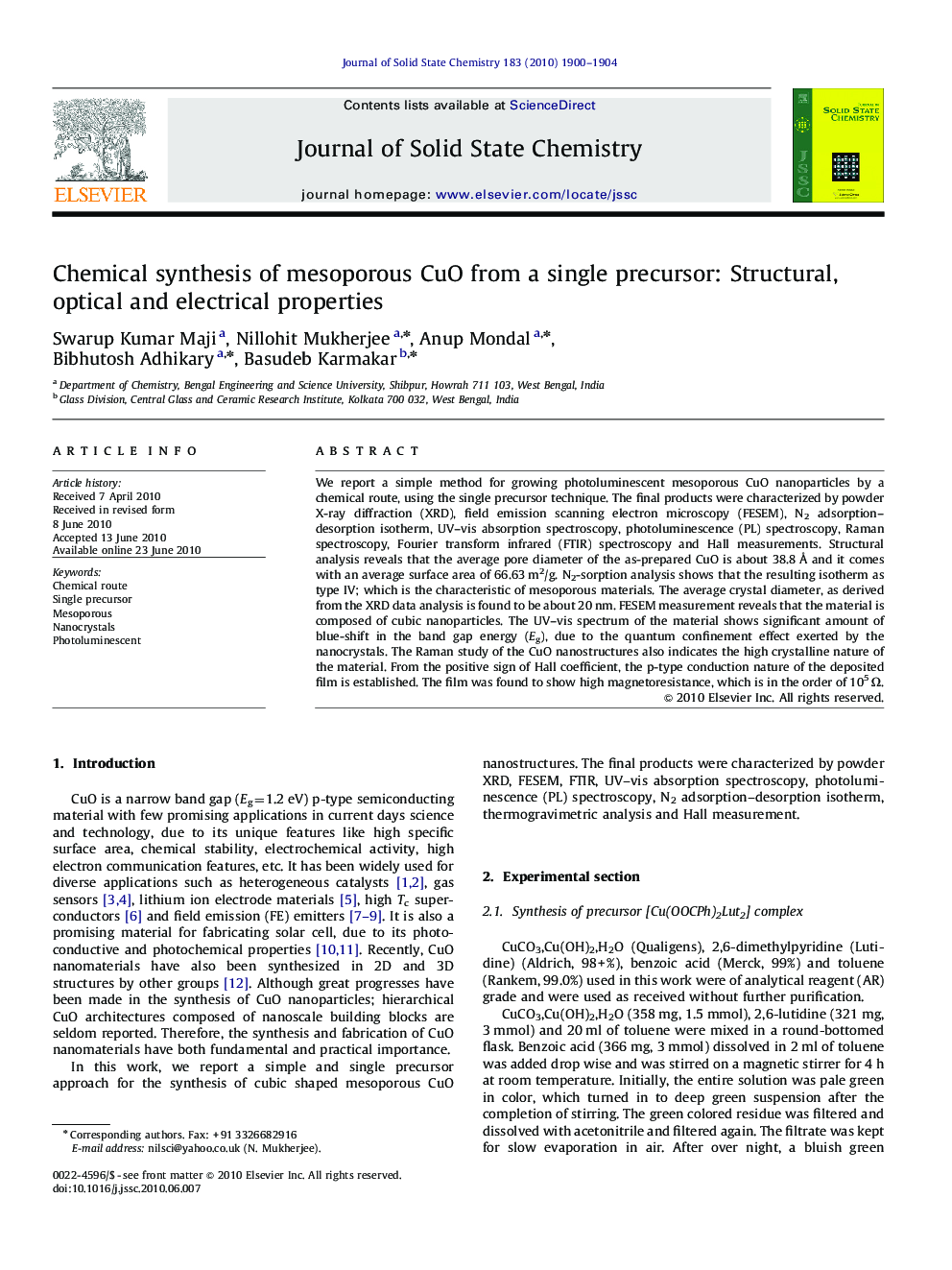| Article ID | Journal | Published Year | Pages | File Type |
|---|---|---|---|---|
| 1333396 | Journal of Solid State Chemistry | 2010 | 5 Pages |
We report a simple method for growing photoluminescent mesoporous CuO nanoparticles by a chemical route, using the single precursor technique. The final products were characterized by powder X-ray diffraction (XRD), field emission scanning electron microscopy (FESEM), N2 adsorption–desorption isotherm, UV–vis absorption spectroscopy, photoluminescence (PL) spectroscopy, Raman spectroscopy, Fourier transform infrared (FTIR) spectroscopy and Hall measurements. Structural analysis reveals that the average pore diameter of the as-prepared CuO is about 38.8 Å and it comes with an average surface area of 66.63 m2/g. N2-sorption analysis shows that the resulting isotherm as type IV; which is the characteristic of mesoporous materials. The average crystal diameter, as derived from the XRD data analysis is found to be about 20 nm. FESEM measurement reveals that the material is composed of cubic nanoparticles. The UV–vis spectrum of the material shows significant amount of blue-shift in the band gap energy (Eg), due to the quantum confinement effect exerted by the nanocrystals. The Raman study of the CuO nanostructures also indicates the high crystalline nature of the material. From the positive sign of Hall coefficient, the p-type conduction nature of the deposited film is established. The film was found to show high magnetoresistance, which is in the order of 105 Ω.
Graphical abstractFESEM image of the mesoporous CuO prepared from Cu(OOCPh)2Lut2 complex.Figure optionsDownload full-size imageDownload as PowerPoint slide
